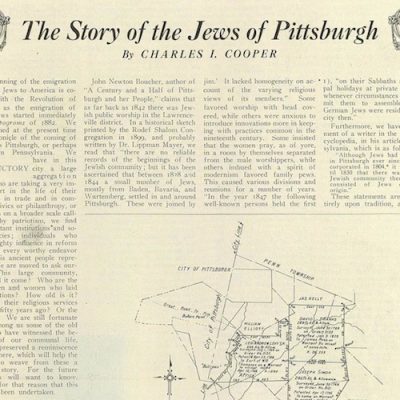
Rodef Shalom Congregation established a parochial day school in April 1860 with 32 students. The school included traditional secular subjects, in addition to training in Jewish religious subjects. Rev. William Armhold provided instruction in German and Hebrew, and Josiah Cohen was hired to provide English instruction. In later years, Rev. Issac Strouse oversaw religious education and John Morrow oversaw English studies.
Throughout the 1850s, Jewish children in Pittsburgh typically attended the local public school during the day supplemented with private religious education at the two local Jewish congregations. According to an article from 1856, the Shaare Shamayim Congregation religious school had 22 pupils, while Rodef Shalom religious school had “about 20 pupils.”
The desire to create a local Jewish parochial school began in 1858 or 1859. According to community historian Jacob Feldman, the move was prompted by a wave of Protestant evangelism within public education, including compulsory Christian prayers and sermons at the end of the formal school day. The Rodef Shalom day school in the fall of 1860, when the congregation absorbed Shaare Shamayim and further strengthened in 1862, with the dedication of a new synagogue on Hancock Street (Eighth Street) in downtown Pittsburgh. By 1863, the Rodef Shalom day school included 90 students and two teachers.
The Rodef Shalom day school declined in prominence in the late 1860s. The founding of Tree of Life Congregation in 1864 drew students away from Rodef Shalom. Changes in public school policy alleviated concerned among Jewish parents about evangelism in public schools. Rodef Shalom formally disbanded its parochial day school in 1868.